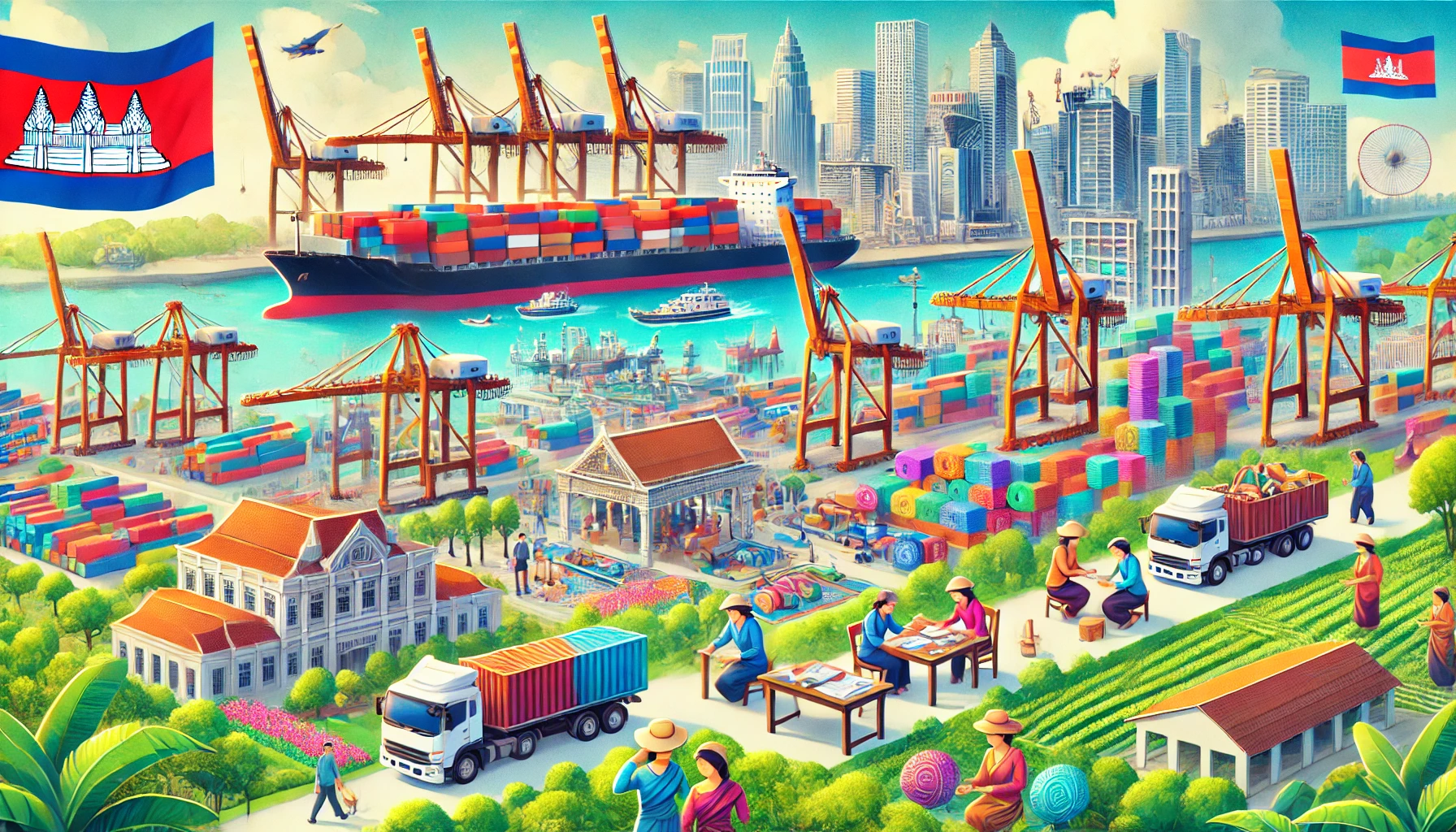From Trade Agreements to Labor Gains: Cambodia's Path to Reducing Informality
The World Bank's study highlights how Cambodia's trade liberalization, especially through ASEAN agreements, has boosted exports, reduced informality, and increased employment, particularly for women. However, challenges remain in addressing labor market disparities and ensuring inclusive growth.

The World Bank’s research paper examines how Cambodia’s economic growth, fueled by trade liberalization and structural transformation, has impacted the country’s labor market. Over the past few decades, Cambodia has experienced rapid economic development, transitioning from an agrarian economy to one increasingly driven by exports and manufacturing. This growth has been closely tied to Cambodia's integration into global trade networks, particularly through its membership in the Association of Southeast Asian Nations (ASEAN) and the World Trade Organization (WTO), as well as its participation in several bilateral and multilateral trade agreements. The paper, authored by Deeksha Kokas, Jaime Alfonso Roche Rodriguez, Gladys Lopez Acevedo, Raymond Robertson, and Wendy Karamba, explores the relationship between these trade agreements and their effects on Cambodia's labor market, using both the gravity model and the Bartik model to estimate the outcomes.
ASEAN Trade Agreements and Their Impact on Cambodia’s Growth
The study found that Cambodia's trade agreements, particularly within ASEAN, have had a significant positive impact on the country’s trade flows. By comparing Cambodia’s performance with other countries, the researchers concluded that Cambodia has benefited more from its trade agreements than the average member country. This trade-driven growth has translated into tangible improvements in the country’s labor market, particularly in terms of reducing informality and increasing the number of hours worked by employees. The paper’s findings suggest that between 2009 and 2019, districts in Cambodia that experienced greater exposure to international trade saw a notable reduction in informal employment and an increase in working hours, with female workers benefiting the most. These findings highlight the gendered nature of Cambodia’s labor market transformation, as industries like apparel manufacturing, which are heavily reliant on female labor, have expanded rapidly due to trade agreements.
Boosting Women’s Employment and Reducing Poverty
The gravity model employed in the study measures how trade agreements influence trade flows between countries. In Cambodia's case, ASEAN trade agreements were particularly effective in boosting trade, with Cambodia experiencing larger-than-average gains. This trade expansion has played a critical role in transforming Cambodia’s labor market, particularly in rural areas where agricultural jobs have given way to employment in manufacturing and services. For example, Cambodia’s apparel industry, one of the largest beneficiaries of trade liberalization, has provided employment opportunities for low-skilled workers, many of whom are women. As a result, female labor force participation rates in Cambodia have risen to levels higher than the regional average. This shift has not only contributed to poverty reduction but has also provided new economic opportunities for women, helping to close the gender gap in employment and wages.
Positive Effects of Trade Exposure on Labor Markets
In addition to the gravity model, the researchers used the Bartik model, also known as the shift-share approach, to analyze how increased trade exposure has affected local labor markets. By looking at how districts with varying levels of trade exposure have fared over time, the researchers were able to draw a clear connection between trade and improvements in labor market outcomes. The results showed that districts with higher exposure to trade saw a decrease in informal employment and an increase in the number of hours worked, especially among female workers. These findings are consistent with the broader literature on trade and labor markets, which suggests that increased trade can lead to better job opportunities and more formal employment, particularly in sectors that are labor-intensive and export-oriented.
Challenges in Reducing Labor Market Informality
However, while the overall trends are positive, the study also highlights some of the challenges Cambodia faces in sustaining this growth and ensuring that its benefits are widely shared. Despite the reduction in informality and the increase in employment, Cambodia’s labor market remains highly segmented, with significant disparities between urban and rural areas, and between men and women. For example, while women have benefited from the expansion of the apparel industry, they are still underrepresented in higher-paying sectors like construction and public administration. Moreover, the gains in formal employment and wages have been uneven, with some districts and sectors benefiting more than others.
Policy Recommendations for Inclusive Growth
The paper concludes by emphasizing the need for targeted policy interventions to ensure that Cambodia’s economic growth remains inclusive and sustainable. While trade liberalization has brought significant benefits, particularly for low-skilled workers and women, there is still much work to be done to reduce labor market informality and ensure that all workers have access to decent jobs with fair wages. The authors suggest that policy efforts should focus on formalizing the labor market, reducing gender disparities, and improving working conditions, particularly in rural areas where informality remains high. Additionally, as Cambodia continues to integrate into global markets, it will be important for policymakers to address the potential challenges posed by external shocks, such as fluctuations in global demand or changes in trade policy, which could disproportionately affect vulnerable workers.
In summary, Cambodia’s experience shows that trade liberalization can be a powerful driver of economic growth and labor market transformation. However, to ensure that the benefits of this growth are widely shared, policymakers will need to focus on addressing the remaining challenges in the labor market, particularly in terms of reducing informality and closing the gender gap in employment and wages. With the right policies in place, Cambodia can continue to build on its successes and achieve more inclusive and sustainable economic development in the years to come.
- FIRST PUBLISHED IN:
- Devdiscourse










